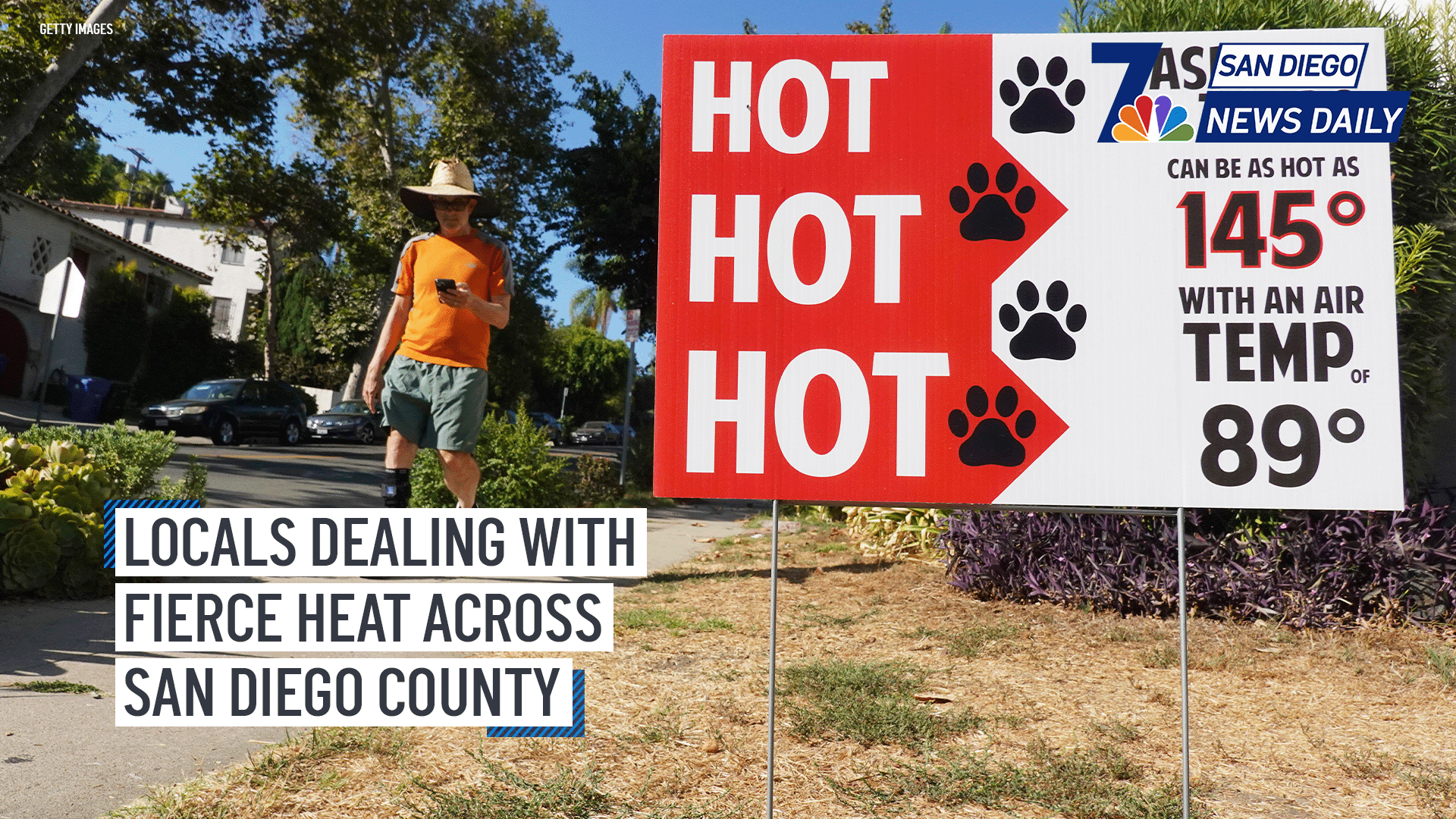Multiple agencies and organizations, including the City of San Diego, PATH, Healthcare in Action, Caltrans and the San Diego River Park Foundation, are working to clear a significant encampment under Interstate 5, north of Interstate 8 and south of the SeaWorld Drive exit, referred to as “the island.”
The spot can be difficult to access because of surrounding water that rises with the tide and is covered not only by the highway but also some brush and trees.
“This area is definitely one of the largest encampments in the City of San Diego,” Sarah Hutmacher, the chief operating officer of the San Diego River Park Foundation, told NBC 7.
Hutmacher said there are an estimated 30 to 40 people living there along with an estimated 20 tons of debris made up of furniture, clothing, bicycles, tents, solar panels and more.
Get top local stories in San Diego delivered to you every morning. Sign up for NBC San Diego's News Headlines newsletter.
“This is environmentally-sensitive land,” she said. “It’s right on a protected wetland. There are endangered species that live in the waters around this island. It's not an appropriate place for people to live from an environmental perspective, but it's also a dangerous place for them.”
Matthew Hoffman, a spokesperson for the City of San Diego, explained that the city is aware of the encampment and has been working for months on a project to address it through a $3.6 million California’s Encampment Resolution Fund grant. That grant is expected to support the city for two years.
Local
“We just got started in this area about two weeks ago,” he said. “You can’t see some of the progress right now, but there's that invisible progress that is so valuable, and that's building those relationships and building that trust.”
Hoffman added that the grant allows the city the financial support to work with each individual to learn what exactly they need.
“For some people, it may be more medical care. For some people, they're ready for that permanent housing. Other people, it may be shelters right now,” he said, while explaining that outreach workers are now there regularly.
We’re not just going in and moving someone to a different neighborhood. We’re working with them to find out what do they need.
Matthew Hoffman, City of San Diego
The portion of land that the encampment is on falls under the city’s jurisdiction, despite it being under the freeway. Caltrans told NBC 7 it maintains some of the land in that area closer to the bike path but that it is helping where it can.
“While the land in the river in this area is not under Caltrans jurisdiction, we recognize the environmentally sensitive nature of this encampment and will support our partners to address it,” a Caltrans statement sent to NBC 7 read.
This is not the first time Hoffman said this kind of grant has been used. The city led a similar project along the Interstate 15 corridor in the City Heights neighborhood. He said, of those who had been living in an encampment there, 18 people were connected to shelter options, five to permanent housing with another eight on the way and three people were reunited with family.
NBC 7 captured drone footage of the island area on Friday. It shows at least 10 tents, canopies or shelters in one section with wheelbarrows, a portion of chain-link fencing, clothes hanging on what seems to be a drying rack and at least a couple of water-related items like a kayak and a paddleboard tied up for use.
David Bennett told NBC 7 he lived there after his car and trailer were impounded. He explained he was told shelters were full, so he followed others down to the island.

“I’ve actually gone to a veteran’s thing, and they are going to maybe assign me a case manager in a month, but until then, I’m holding strong,” Bennett said. “I’m an adventurous type, so I ventured down into there.”
Bennett said despite having a job, he does not have enough money for other shelter or to get his vehicles back. When he discovered there is an effort to clear the encampment, he recently started to call home. He said, ”they’ll find another place and just do the same thing.”
Bennett added that there needs to be a “real solution” offered. Hoffman shared he hopes everyone in the encampment will be willing to discuss their needs with volunteers performing outreach and be open to the resources offered. The goal is to have the area cleared in the fall of this year.



